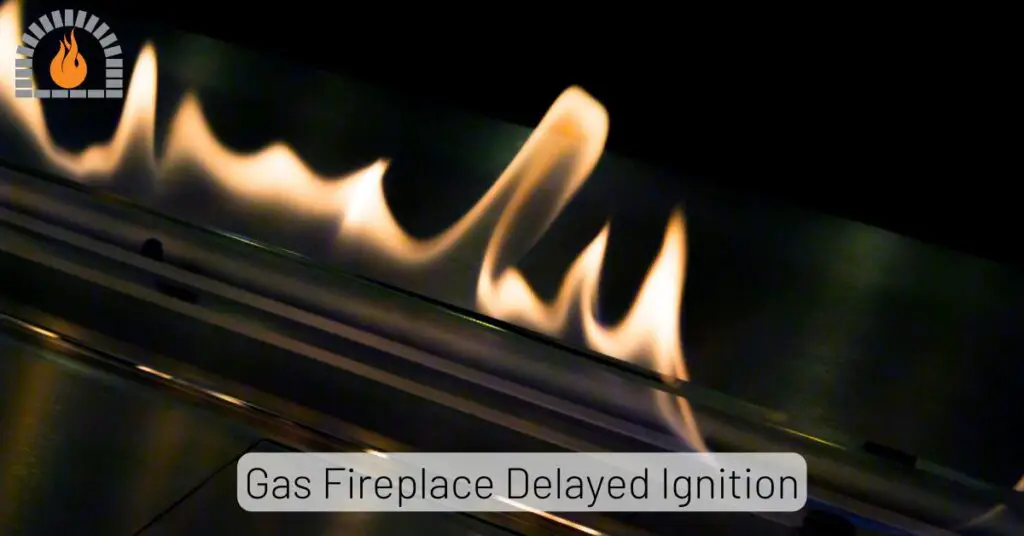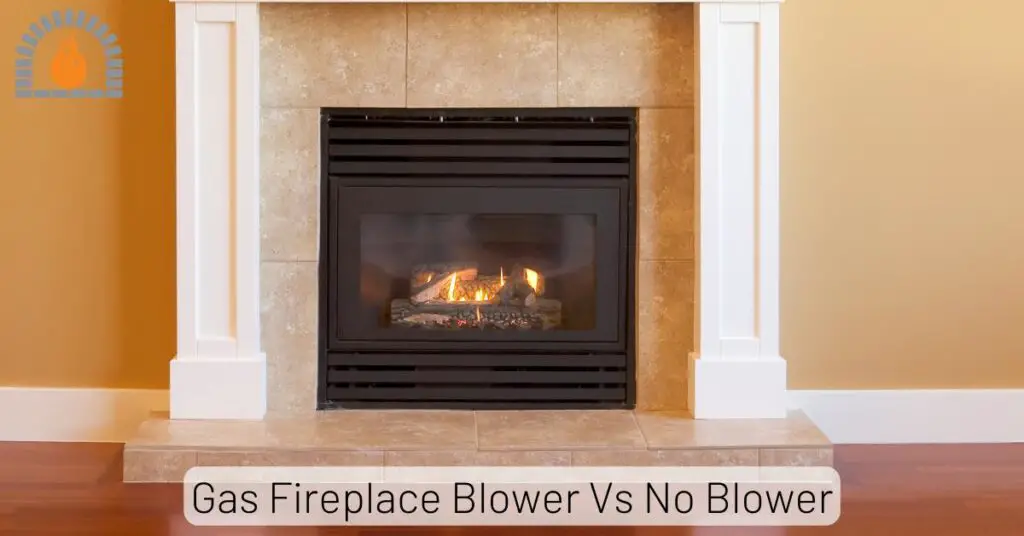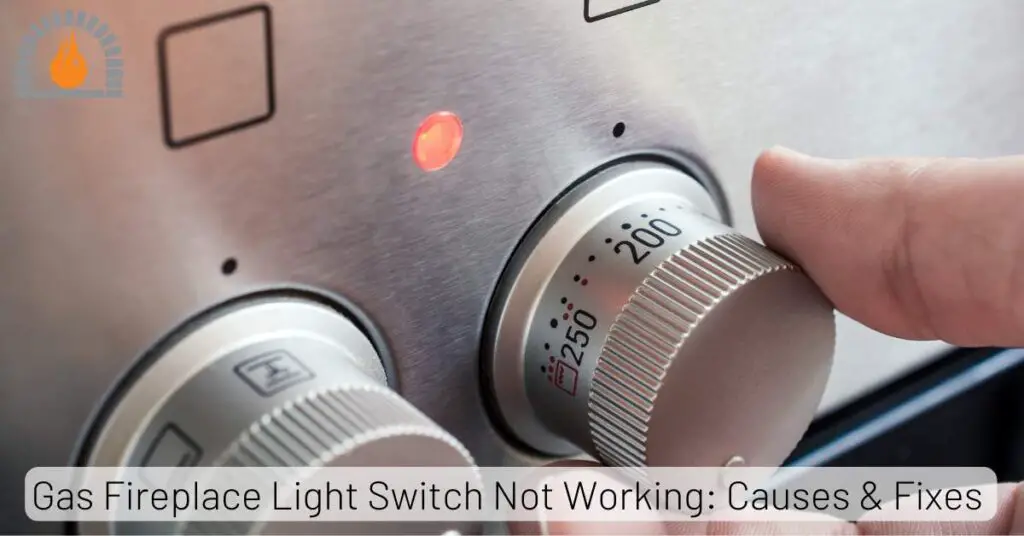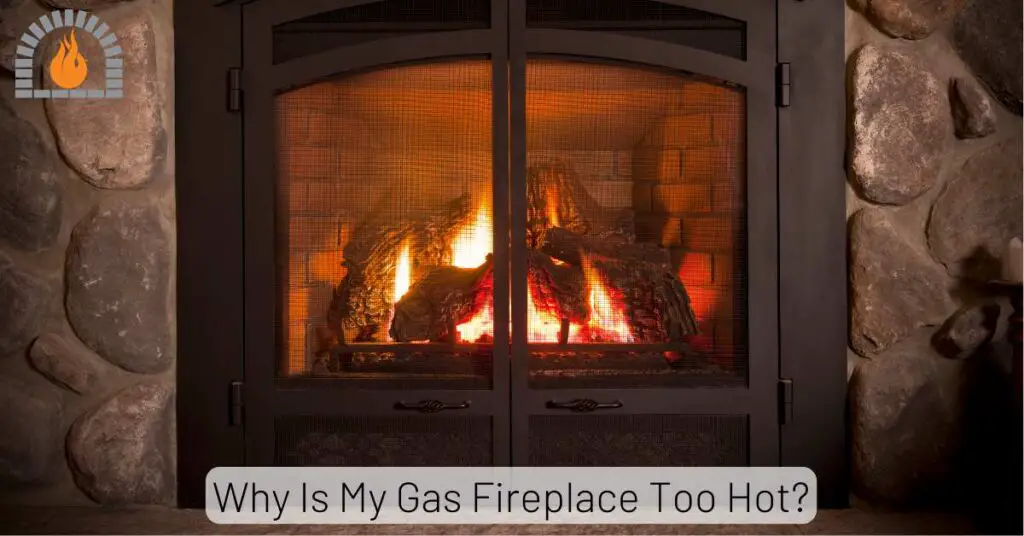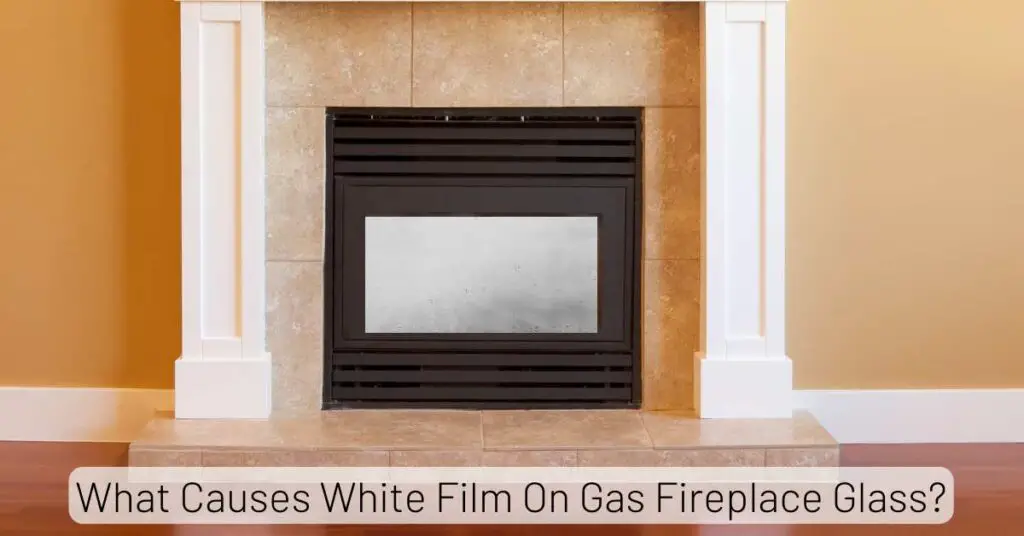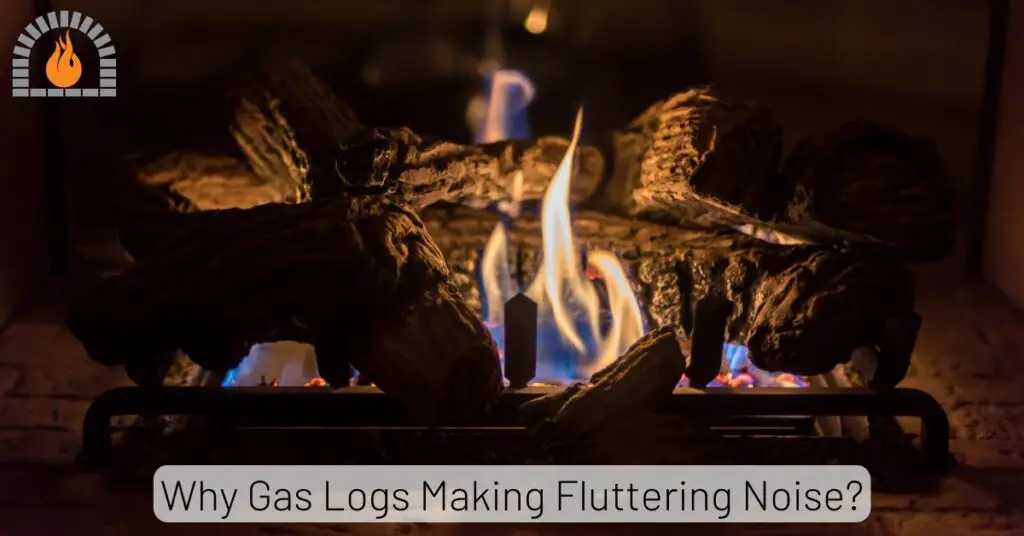A direct vent gas fireplace is designed to pull fresh air from outside your home for combustion and push exhaust gases back outside, keeping your indoor air cleaner and safer. Unlike old-style fireplaces, which often draw warm air out of your living space and send it up the chimney, these units maximize heating efficiency while providing a consistent flame.
Homeowners love them not just for efficiency but also for convenience. With the touch of a button or a remote control, you can enjoy instant flames without stacking wood or lighting kindling. Plus, these fireplaces come in various designs, from sleek modern styles to traditional stone-surround looks, allowing them to blend seamlessly with almost any décor.
In this guide, we’ll break down everything you need to know—from installation steps, pors & cons to safety measures—so you can confidently enjoy the benefits of a direct vent gas fireplace in your home.
What is a Direct Vent Gas Fireplace?
At its core, a direct vent gas fireplace is a heating appliance that burns natural gas or propane while venting all combustion by-products directly outside. This is done through a sealed glass front and a two-layer venting system—one pipe draws fresh outside air into the fireplace for combustion, while the other expels exhaust gases.
Unlike vent-free fireplaces, which release combustion gases into your home, direct vent units are completely sealed. This makes them safer for households with kids, pets, or anyone sensitive to indoor air quality. They’re also much more efficient than traditional open-hearth fireplaces, which lose significant heat up the chimney.
Another defining feature is the realistic flame appearance. Modern direct vent fireplaces often use ceramic logs, embers, or glass media that mimic the look of a wood-burning fire, giving you ambiance without the mess. With multiple size and style options, they can be wall-mounted, built into cabinetry, or even installed as corner or see-through units.
Simply put, a direct vent gas fireplace offers the best of both worlds: the beauty of a fire and the safety of advanced venting technology.
Why Homeowners Prefer Direct Vent Models
If you ask homeowners why they switched to direct vent fireplaces, the answers usually fall into three categories: efficiency, safety, and convenience.
- Efficiency – Direct vent fireplaces convert most of the fuel into usable heat for your home. While traditional wood-burning fireplaces lose up to 80% of their heat through the chimney, direct vent systems can achieve efficiency ratings of 70–85%. That’s a noticeable difference in both comfort and energy bills.
- Safety – Because the system is sealed, there’s no risk of smoke, carbon monoxide, or other harmful gases entering your living space. The glass front remains cool enough to prevent burns, and since it draws air from outside, your indoor oxygen levels remain stable.
- Convenience – No chopping, stacking, or storing wood. No ash cleanup. No chimney sweeping. With a direct vent fireplace, you get instant warmth with the push of a button. Some models even come with programmable thermostats, allowing you to set your desired room temperature.
Add in their modern aesthetic appeal and versatility in design, and it’s easy to see why these fireplaces have become a go-to choice for homeowners looking to upgrade their heating solutions without sacrificing style.
Key Benefits Over Traditional Fireplaces
When comparing a direct vent gas fireplace to a traditional wood-burning fireplace, the advantages are crystal clear.
- Cleaner Indoor Air – Wood-burning fireplaces release fine particles, smoke, and creosote, which can irritate the lungs and trigger allergies. Direct vent models eliminate these risks.
- Cost-Effective Operation – Natural gas or propane often costs less than firewood, especially when you consider the labor and time spent handling wood.
- Low Maintenance – No more chimney sweeping or ash disposal. Occasional glass cleaning and professional check-ups are all that’s needed.
- Flexible Installation – While wood fireplaces require a chimney, direct vent systems can vent horizontally through a wall or vertically through a roof.
- Eco-Friendly Choice – Burning natural gas produces fewer pollutants than wood, making direct vent fireplaces a greener heating option.
- Aesthetic Versatility – From contemporary glass-front units to rustic log sets, these fireplaces can match almost any interior design style.
For families who want a cozy fireplace experience without the mess, maintenance, or inefficiency of a traditional setup, direct vent gas fireplaces are an unbeatable option.
How Direct Vent Gas Fireplace Work?
At its core, the direct vent gas fireplace is designed to provide heat while keeping indoor air clean and free from combustion by-products.
The sealed combustion chamber is the most critical element. Unlike a traditional fireplace, which draws room air for combustion and sends much of it up the chimney, a direct vent fireplace pulls oxygen-rich air directly from outside through a coaxial pipe system. This system consists of two pipes in one: the inner pipe carries exhaust gases out, while the outer pipe pulls fresh air in.
When you ignite the fireplace—usually with the push of a button, wall switch, or remote control—the gas (either natural gas or propane) mixes with the incoming fresh air to create a clean, efficient burn. The exhaust gases are then pushed outside, never mixing with your indoor air supply.
Because this process doesn’t disturb the oxygen levels inside your home, it keeps your living space healthier and more comfortable. It also prevents backdrafting issues, where smoke or harmful gases might otherwise seep indoors. This safe, closed-loop system is what makes direct vent fireplaces so popular among homeowners who want both efficiency and peace of mind.
Differences Between Vent-Free and Direct Vent Systems
When shopping for a gas fireplace, you’ll often see two main options: vent-free (ventless) and direct vent systems. While both offer the convenience of gas heating, the differences are significant—and they matter when it comes to safety, comfort, and efficiency.
- Air Quality:
Vent-free fireplaces release combustion gases directly into your room. While they’re designed to burn cleanly, they still emit small amounts of carbon dioxide, water vapor, and in some cases, nitrogen dioxide. Direct vent fireplaces, on the other hand, vent everything outdoors, ensuring your indoor air remains clean. - Efficiency:
Vent-free systems can technically achieve near 100% efficiency since all the heat stays inside. However, this comes at the cost of indoor air quality. Direct vent systems typically operate at 70–85% efficiency, which balances performance with safety. - Legal Restrictions:
Many states and municipalities have strict regulations against vent-free fireplaces because of potential health concerns. Direct vent fireplaces, being safer, are widely approved and easier to get permitted. - Moisture Concerns:
Vent-free fireplaces produce significant water vapor, which can lead to condensation, mold, and damage to walls or windows. Direct vent units do not add extra moisture to your home.
So, while vent-free fireplaces might look attractive at first glance due to their lower installation costs, direct vent systems clearly win in long-term safety, comfort, and reliability.
Components of a Direct Vent Gas Fireplace
A direct vent gas fireplace may look sleek and minimal on the outside, but inside, it’s made up of several important parts that work together to create a safe, efficient heating system. Here are the key components you’ll find:
- Firebox – The sealed chamber where the fire burns. It’s designed to maximize heat transfer while keeping combustion isolated from your indoor air.
- Ceramic Logs or Media – These imitate real wood or use glass/stone media for modern designs. They don’t burn but add realism and style to the flame display.
- Glass Front – A sealed, heat-resistant panel that keeps combustion gases contained while allowing you to enjoy the fire.
- Burner System – The component that mixes gas with air to create a clean, controlled flame.
- Coaxial Vent Pipe – A dual-layer vent that both supplies fresh outside air and removes exhaust gases.
- Ignition System – Can be manual, electric, or battery-powered, allowing for easy flame startup.
- Gas Valve and Controls – Regulates gas flow and flame height. Many models include thermostats or remote controls for convenience.
- Safety Shut-Off Valve – Automatically stops gas flow if the flame goes out or if irregularities are detected.
Each of these parts is essential for ensuring your fireplace operates smoothly and safely. Knowing how they work together helps you understand why professional installation is so important.
Planning Your Fireplace Installation
Before jumping into installation, it’s essential to plan carefully. A direct vent gas fireplace isn’t just a plug-and-play appliance; it requires thoughtful consideration of placement, size, and compliance with safety codes.
The first step is deciding where the fireplace will go. Living rooms, dens, and master bedrooms are popular choices, but you’ll need to make sure the chosen wall can accommodate venting. Direct vent systems can vent horizontally through an exterior wall or vertically through the roof, so placement flexibility is a big advantage.
Next, think about room size and heating capacity. Fireplaces are rated in BTUs (British Thermal Units), which measure heating power. A small unit might warm a cozy bedroom, while a larger fireplace can comfortably heat a spacious living room. Choosing the right size ensures efficiency without overheating the room.
Finally, don’t overlook building codes and permits. Most jurisdictions require a permit for gas appliance installation, and some have specific rules about clearances, venting methods, and gas line connections. Ignoring these regulations could lead to safety hazards—or expensive fines.
By carefully planning your installation, you set the stage for a smooth process and years of safe enjoyment.
Choosing the Right Location
Selecting the right spot for your direct vent gas fireplace is one of the most critical steps in the installation process. Unlike portable heaters, fireplaces become a permanent fixture in your home, so placement matters both for functionality and aesthetics.
The first thing to consider is venting requirements. Since direct vent systems pull fresh air from outdoors and expel exhaust the same way, your fireplace needs access to an exterior wall or a roofline for proper venting. If you want a horizontal vent, placing the unit on an outside wall is the simplest solution. For a vertical vent, you’ll need to ensure a straight pathway through the ceiling and roof.
Next, think about room layout and traffic flow. You don’t want the fireplace tucked away in a corner where nobody will enjoy it, but you also don’t want it blocking pathways or competing with other focal points like large windows or TVs. Ideally, the fireplace should enhance your room’s natural gathering area.
Another factor is clearance from combustible materials. Mantels, drapes, furniture, and even certain wall materials need to be a safe distance from the fireplace. Manufacturers provide detailed clearance requirements, and following these is non-negotiable for safety.
Finally, consider the aesthetic impact. A well-placed fireplace can transform a room, adding both warmth and value to your home. Some homeowners even choose double-sided fireplaces that open into two rooms, maximizing enjoyment. With careful planning, your fireplace won’t just heat your home—it will also become a centerpiece of comfort and design.
Sizing and Heating Capacity Considerations
When it comes to fireplaces, bigger isn’t always better. The right size depends on your room’s square footage, ceiling height, insulation quality, and how much supplemental heat you need. Choosing a fireplace that’s too small won’t keep your space warm, while one that’s too large can make the room uncomfortably hot.
Fireplaces are rated in BTUs (British Thermal Units). A general rule of thumb is:
- Small spaces (up to 500 sq. ft.) → 5,000–10,000 BTUs
- Medium spaces (500–1,000 sq. ft.) → 10,000–20,000 BTUs
- Large spaces (1,000–2,000 sq. ft.) → 20,000–40,000 BTUs
However, these numbers can shift based on insulation quality, climate, and whether the fireplace will be a primary or secondary heat source. For example, a well-insulated home in a mild climate might require fewer BTUs than an older drafty home in a cold region.
Many modern fireplaces also feature adjustable heat settings and thermostats, allowing you to fine-tune output. Some even come with blowers or fans that circulate heat more effectively, spreading warmth evenly throughout the room.
Getting the size right is crucial not just for comfort, but also for efficiency and safety. An oversized unit that constantly runs on low flames may not burn cleanly, leading to soot buildup, while an undersized fireplace might work too hard and wear out faster. Always consult manufacturer guidelines or a professional installer when deciding on the perfect fit.
Local Building Codes and Permits
Installing a gas fireplace isn’t just about aesthetics—it’s also about compliance with local regulations. Every city or county has building codes designed to protect homeowners, and fireplaces fall under strict safety categories.
Most jurisdictions require a permit before installation begins. This ensures your project will be inspected by building officials, verifying that venting, gas line connections, and clearances meet safety standards. Skipping this step might save time upfront, but it can cause headaches later, especially if you plan to sell your home. Home inspectors often flag unpermitted installations, which can lower your property value or delay sales.
Building codes also dictate venting methods, gas line materials, electrical wiring, and fire-resistant construction. For instance, some areas may restrict horizontal venting near windows or doors to prevent exhaust from entering the home. Others may have rules about gas shutoff valves and accessibility.
If you live in a community governed by an HOA (Homeowners’ Association), you’ll likely need approval there too. They may have restrictions on exterior vent placement or visible chimney caps.
To avoid costly mistakes, always check with your local building authority before starting. Hiring a licensed contractor not only ensures compliance but also provides peace of mind knowing your installation is safe and legal.
Step-by-Step Installation Guide
Now that you’ve chosen the right size, location, and secured your permits, it’s time to move into the installation phase. While many homeowners prefer hiring professionals (and for good reason), understanding the process gives you valuable insight into how your fireplace comes together.
The installation can be broken down into five major steps:
- Gathering the proper tools and materials.
- Preparing the wall and venting area.
- Installing the venting system.
- Securing the fireplace unit.
- Connecting gas and electrical lines.
Each of these steps requires careful attention to detail, adherence to manufacturer instructions, and strict compliance with safety codes. Even if you don’t plan on doing the work yourself, knowing the process helps you communicate clearly with contractors and spot potential issues early.
Let’s break each step down in more detail so you know exactly what’s involved in setting up a direct vent gas fireplace in your home.
Tools and Materials You’ll Need
Before beginning installation, gather all necessary tools and supplies. Having everything on hand not only saves time but also reduces the risk of mistakes. Here’s a typical checklist for direct vent fireplace installation:
Tools:
- Power drill and bits
- Screwdrivers (flathead and Phillips)
- Adjustable wrench
- Level
- Tape measure
- Utility knife
- Caulking gun
- Reciprocating saw (for cutting vent openings)
- Stud finder
- Safety gear (gloves, goggles, dust mask)
Materials:
- Direct vent fireplace unit (with manufacturer’s installation kit)
- Venting system (pipes, elbows, wall thimbles, roof caps as needed)
- Fire-resistant insulation and framing materials
- Gas line (black iron or flexible approved piping)
- Gas shutoff valve and fittings
- Electrical wiring and outlet (if unit requires power)
- Non-combustible sealant or caulk
- Fasteners and brackets for securing unit
Pro Tip: Always use manufacturer-approved venting components. Mixing brands or improvising with generic parts can lead to dangerous leaks or system failures.
Once you’ve gathered everything, you’re ready to move on to preparing the installation area.
Preparing the Wall and Venting Area
Preparation is one of the most important parts of fireplace installation. A poorly prepped wall or venting space can lead to dangerous leaks, improper airflow, or even fire hazards. Before lifting the unit into place, you’ll need to carefully set up the wall, floor, and vent path.
Start by marking the installation location. Use a stud finder to locate framing studs, then outline where the fireplace will sit. Be sure to leave enough clearance for vent pipes, gas lines, and electrical connections. Manufacturer instructions will specify exact spacing requirements, so double-check before cutting.
Next, create an opening for the venting system. If you’re venting horizontally, you’ll cut through the exterior wall. For vertical venting, you’ll need to open up the ceiling and roof. Always cut slightly smaller than needed at first—you can adjust the opening as you go, but you can’t put material back once it’s gone.
Install fire-resistant materials around the opening to protect your home. This may include non-combustible boards, framing, or insulation, depending on local codes. Some manufacturers also require a wall thimble (a protective sleeve) to safely pass vent pipes through walls.
Finally, make sure the floor beneath the fireplace is strong enough to hold the unit. For heavier models, you may need to reinforce the subfloor. Once everything is marked, cut, and reinforced, you’re ready to install the venting system.
Installing the Venting System
The venting system is the lifeline of your direct vent gas fireplace. Done right, it ensures efficient combustion and keeps dangerous gases outside. Done wrong, it can create major safety hazards.
Most direct vent fireplaces use a coaxial venting system (pipe within a pipe). The inner pipe carries exhaust out, while the outer pipe brings fresh air in. Depending on your layout, you’ll use one of two venting methods:
- Horizontal Venting – Goes directly through an exterior wall. This is the simplest and most common installation method. A vent cap is mounted outside to keep out rain, pests, and debris.
- Vertical Venting – Runs through the ceiling and roof. More complex than horizontal, this method requires roof flashing, fire stops, and a vertical termination cap.
When installing, keep these rules in mind:
- Maintain clearances from combustible materials (usually 1–2 inches, but check manufacturer guidelines).
- Keep vent length within manufacturer limits. Too long or too many bends reduce efficiency.
- Seal all joints with high-temperature sealant to prevent leaks.
- Always install the termination cap properly—it prevents backdrafts and ensures smooth airflow.
Once the venting is secure, it’s time to position and lock the fireplace unit in place.
Securing the Fireplace Unit
With the venting ready, you can now set the fireplace into its permanent location. This step may seem straightforward, but precision is key—if the unit isn’t level or properly secured, you could face performance and safety issues later.
Begin by carefully sliding the unit into the framed opening. Use a level to check that it sits perfectly straight. Even a slight tilt can cause uneven flames or strain on the vent system.
Once positioned, secure the fireplace using mounting brackets or screws provided by the manufacturer. These fasten the unit to the framing, preventing movement or shifting over time. Be sure not to overtighten, as this could damage the unit.
Next, double-check the clearances around the unit. Fireplaces generate heat, so maintaining proper spacing from combustibles (like drywall, wood framing, or insulation) is critical. If your model includes built-in spacers or shields, install them as directed.
Finally, prepare the finishing area. Many homeowners choose to frame the fireplace with stone, tile, or decorative panels, but always use non-combustible materials close to the unit. Once the fireplace is secure, you can move on to connecting the gas and electrical systems.
Connecting Gas and Electrical Lines
This stage of the installation is where things get serious. Connecting gas and electrical lines should be handled with extreme care—or ideally, left to licensed professionals. Mistakes here can lead to gas leaks, fires, or even explosions.
For the gas connection, you’ll need to:
- Install a dedicated shutoff valve near the fireplace for safety.
- Use black iron pipe or approved flexible connectors to run the gas line.
- Check all fittings with a leak detection solution (soap and water works) before use. Never test with an open flame.
For the electrical connection (if required):
- Some fireplaces use electronic ignition or blower fans, which need a standard outlet nearby.
- Wiring must follow local codes, and in some cases, a dedicated circuit is required.
- Always disconnect power before making any connections.
After both systems are connected, test the fireplace for leaks and proper ignition. At this point, your unit should be fully operational—but before enjoying your first fire, it’s crucial to go over safety precautions.
Safety Precautions During Installation
A direct vent gas fireplace is designed to be safe, but only if installed correctly. Skipping steps or cutting corners can create dangerous risks for you and your family. Here are the most important safety measures to keep in mind:
- Professional Installation vs. DIY – While handy homeowners may be tempted to tackle the project themselves, it’s best to hire a licensed installer, especially for the gas and electrical connections. Professionals know the codes, have the right tools, and can ensure everything’s done safely.
- Gas Leak Prevention – Always test gas lines with a leak solution after installation. Install a carbon monoxide detector in the same room as the fireplace for extra peace of mind.
- Proper Venting and Airflow – Never improvise with venting parts. Always use manufacturer-approved components and follow clearance rules strictly. Blocked or poorly installed vents can cause exhaust gases to back up into your home.
- Fireproofing Surrounding Areas – Use non-combustible materials like tile, brick, or stone around the fireplace. Keep drapes, furniture, and decorations at least three feet away from the unit.
- Routine Inspection – Even after installation, have your fireplace inspected annually by a professional. This ensures all parts remain in good working condition and prevents long-term hazards.
By following these precautions, you’ll not only protect your home but also maximize the efficiency and lifespan of your new fireplace.
Operating Your Direct Vent Gas Fireplace
Once your fireplace is installed, knowing how to operate it properly ensures both safety and comfort. The beauty of a direct vent system is its simplicity—you can enjoy instant warmth with just the push of a button. But behind that convenience, there are important operating practices every homeowner should know.
Most units come with three common ignition systems:
- Standing Pilot Light – A small flame that stays lit at all times. It makes starting the fireplace quick, but it does use a small amount of gas continuously.
- Electronic Ignition – Lights the flame only when needed, saving energy. Some models require electricity, while others run on battery backup.
- Millivolt Ignition System – Generates its own power through the heat of the pilot light, meaning it works even during power outages.
Operating the fireplace usually involves turning a knob or pressing a switch. Many models also include remote controls, wall-mounted thermostats, or even smart-home integration for added convenience. You can adjust flame height, fan speed, and sometimes even lighting effects depending on your unit.
When using the fireplace, always keep the glass front secured in place. Never attempt to operate it with the panel removed, as the system relies on its sealed combustion chamber. Also, avoid placing objects directly on top of the unit, especially if it has vents that release warm air.
For the first few hours of operation after installation, you may notice a slight odor or smoke. This is normal—it’s just the factory coatings burning off. Keep windows open during the initial run. Afterward, your fireplace should operate cleanly, with little to no odor.
Maintenance and Cleaning Tips
One of the biggest advantages of a direct vent gas fireplace is its low maintenance compared to wood-burning models. Still, regular upkeep is necessary to keep it safe and efficient.
Here’s a routine maintenance checklist:
- Glass Cleaning: Over time, the glass front may develop a white haze from mineral deposits in the gas. Clean it every few months with a manufacturer-approved fireplace glass cleaner. Avoid household cleaners, as they can damage the glass or leave streaks.
- Inspecting Venting System: Check the outside vent cap periodically to make sure it isn’t blocked by leaves, snow, or nests. A clogged vent can cause poor performance or even dangerous backdrafting.
- Vacuuming Logs and Firebox: Dust and pet hair can collect inside. Gently vacuum around ceramic logs, embers, and the burner using a soft brush attachment.
- Gas Line and Pilot Light Check: Once a year, have a professional inspect the gas connections and pilot light system to ensure there are no leaks or malfunctions.
- Blower/Fan Maintenance: If your unit includes a blower, clean it at least twice a year to prevent dust buildup, which can reduce efficiency.
It’s also recommended to schedule a professional inspection once a year. This ensures that hidden components, like gas valves and seals, are in good condition. While maintenance is simple, neglecting it can shorten the life of your fireplace or compromise safety.
Troubleshooting Common Issues
Even with proper installation and care, you may occasionally encounter issues with your fireplace. Thankfully, most are easy to diagnose and resolve.
1. Fireplace Won’t Ignite
- Check if the gas supply is turned on.
- Make sure the pilot light is lit (if your model has one).
- Replace batteries in remote control or ignition system.
2. Weak or Uneven Flame
- Inspect the venting system for blockages.
- Ensure proper gas pressure (a professional may need to adjust this).
- Clean the burner and logs—dust buildup can disrupt airflow.
3. Strange Odor
- A slight smell during first use is normal.
- Persistent odor may indicate a gas leak or venting problem. Turn off the unit and call a professional immediately.
4. Excessive Soot on Glass
- This often means incomplete combustion, usually due to improper venting or incorrect gas-to-air ratio. Have a technician inspect the unit.
5. Fan or Blower Noise
- Over time, blowers may collect dust or wear out. Cleaning or replacing the fan typically solves this issue.
By learning to troubleshoot small issues, you can avoid unnecessary service calls. But for anything gas-related or persistent problems, always rely on a certified technician.
Energy Efficiency and Cost Considerations
One of the top reasons homeowners choose direct vent gas fireplaces is their impressive energy efficiency. Unlike traditional fireplaces that lose most heat through the chimney, direct vent systems keep warmth inside where it belongs.
Most models operate at 70–85% efficiency. This means the majority of the fuel you pay for is converted into usable heat. Compare that to wood fireplaces, which average around 10–20% efficiency, and the difference in heating performance (and cost savings) becomes clear.
Operating costs depend on fuel type and local utility rates. Natural gas tends to be cheaper than propane, but propane is a great alternative in rural areas without gas lines. On average:
- Natural Gas Fireplace: $0.20–$0.40 per hour
- Propane Fireplace: $0.60–$1.00 per hour
When compared to electric space heaters or wood stoves, direct vent fireplaces often strike a balance between affordability, comfort, and convenience.
To maximize efficiency, look for models with:
- Programmable thermostats that maintain consistent room temperatures.
- Variable flame settings to adjust heat output.
- Blowers or fans that distribute warmth evenly.
While the upfront cost of a direct vent fireplace and installation can range from $3,000 to $7,000, the long-term energy savings, low maintenance, and added home value make it a smart investment for many families.
Common Mistakes to Avoid
Installing and using a direct vent gas fireplace may seem straightforward, but many homeowners (and even DIY installers) make errors that can compromise safety or efficiency. Here are some of the most common mistakes to avoid:
- Skipping the Permit Process – Ignoring local codes can lead to fines, failed inspections, and even insurance issues if something goes wrong.
- Improper Venting – Using the wrong vent parts or installing vents with too many bends reduces airflow and increases the risk of exhaust backdrafting.
- Ignoring Clearance Requirements – Placing furniture, drapes, or decorations too close to the fireplace is a fire hazard.
- Incorrect Sizing – Choosing a fireplace that’s too big or too small for the room results in poor heating performance.
- DIY Gas Connections – Handling gas lines without professional help is extremely dangerous. Always hire a licensed technician for this step.
- Neglecting Maintenance – A fireplace may run fine for years, but skipping annual inspections can lead to hidden leaks, worn seals, or dangerous malfunctions.
By steering clear of these pitfalls, you’ll not only keep your fireplace safe but also extend its lifespan and efficiency.
Final Thoughts
A direct vent gas fireplace is one of the best investments you can make for your home. It combines the beauty and ambiance of a traditional fire with modern efficiency, safety, and convenience. From choosing the right size and location to following proper installation and safety practices, every step matters in ensuring your fireplace performs at its best.
Compared to traditional wood-burning fireplaces, direct vent models offer cleaner air, lower maintenance, and better heating efficiency. They also come in a wide variety of designs, making it easy to match your home’s style—whether you prefer rustic charm or sleek modern lines.
With proper planning, professional installation, and routine maintenance, your direct vent fireplace will provide reliable warmth and comfort for years to come. It’s more than just a heater—it’s a centerpiece that brings family and friends together, transforming your home into a cozy haven.
You May Also Like To Read:
FAQs
Can I install a direct vent gas fireplace myself?
While some handy homeowners may attempt it, professional installation is strongly recommended—especially for gas and electrical connections.
How long does a typical installation take?
Most professional installations take 1–2 days, depending on venting complexity and finishing work.
Do direct vent fireplaces work during a power outag
Yes, many models with millivolt systems work without electricity. However, units with blowers or electronic ignition may require backup power.
How often should I service my fireplace?
At least once a year. Annual inspections catch leaks, blockages, and worn components before they become serious problems.
Are direct vent fireplaces safe for kids and pets?
Yes. Since they are sealed with a glass front and vent outdoors, they are much safer than open fireplaces. Still, the glass can get hot, so always use caution.
Affiliate Disclosure: Fireplaceadviser.com is a participant in the Amazon Services LLC Associates Program. We may earn a commission when you click on certain links on this site and purchase.

Hello!! I am Jamal Khan. I often fix my home electric heaters and gas stove problems and research the common issues in the heating units to improve my knowledge and expertise. The aim of establishing fireplaceadviser.com is to share my expertise and knowledge with my audience.







